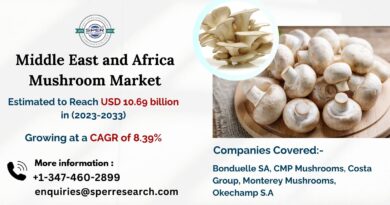Top Challenges In Custom Clearance and How to Overcome them
vdvdEffective customs clearance is essential to ensuring a smooth flow of products across borders in the hectic world of international trade. The role of clearing forwarding agents in Karachi becomes more and more important as companies grow internationally. But there are challenges to this complex procedure. In this post, we will examine the main obstacles that companies dealing with customs clearance must overcome and offer practical solutions.
Daftar Isi
Understanding Custom Clearance
Customs clearance is an important process in international trade that entails the submission and processing of documentation as well as compliance with customs laws in order for goods to enter or exit a country. Through this procedure, shipments are guaranteed to comply with all legal requirements, pay all applicable customs and taxes, and follow trade regulations.
Here’s a breakdown of the key components involved in understanding customs clearance:
Documentation:
The filing of the required documentation is the first step toward customs clearance. A packing list contains information on the contents of each shipment, whereas a business invoice lists the products’ value, quantity, and description. The contract between the shipper and carrier is represented by the Bill of Lading (B/L) or Airway Bill (AWB), while the nation of origin of the goods is attested to by the Certificate of Origin. A Customs Declaration also includes important details about the products that are being imported or exported.
Customs Tariff Classification:
It is essential to decide which Harmonized System (HS) codes to use when classifying products. These internationally recognized codes help with correct identification and documentation by classifying things for customs reasons.
Valuation:
It is essential to accurately determine the worth of products for customs reasons. This entails applying different techniques of valuation in accordance with customs requirements, or taking into account the transaction value.
Duty and Tax Calculation:
Part of the customs clearing process involves figuring out what duties, taxes, and fees will apply. This is done by taking into account the customs value, the tariff classification, and any applicable trade agreements.
Customs Entry:
To start the customs clearing process, the required paperwork and information must be submitted to the customs authorities. This is usually done using electronic data interchange (EDI) systems or other designated ways.
Post-Clearance Compliance:
It is essential to continue adhering to customs regulations. To ensure ongoing compliance with customs regulations, this include tasks including record-keeping, reporting, and handling any post-clearance concerns that may come up.
Top Challenges in Custom Clearance and Solutions
Dynamic Regulatory Environment:
Customs and trade regulations are often being updated, which makes it challenging for clearing forwarding agents and freight agents in Pakistan especially in Karachi to operate in this environment. It’s essential to keep up with the most recent updates to prevent delays and penalties.
Solution: Put in place a strong compliance management system with ongoing regulation update monitoring. Work together with legal professionals to efficiently interpret and apply changes effectively.
Documentary Compliance:
Incomplete or inaccurate paperwork frequently causes delays in the processing of customs clearance. For businesses, navigating the plethora of paperwork needed for various shipments can be a difficult undertaking.
Solution: Set in place an effective framework for managing documentation. Make use of digital tools to expedite the process of creating, submitting, and monitoring necessary documents. It is also crucial to provide staff with regular training on document compliance.
Challenges with Tariff Classification:
It is critical for effective duty assessment to determine the correct tariff classification for commodities. Legal ramifications or excessive payments may result from misclassification.
Solution: Pay for personnel involved in tariff classification to receive training. To increase accuracy and efficiency, make use of technology, such as automated classification tools
Customs Valuation Issues:
Another frequent difficulty is determining the accurate value for items. It is possible for declared values to be contested by customs officials, which would cause delays and extra inspection.
Solution: Ensure that all transaction values are kept in clear, comprehensive records. In order to guarantee proper value, implement internal controls. When confronted with valuation difficulties, get expert counsel.
Communication Barriers:
When interacting with authorities, carriers, and other stakeholders during the customs clearance process, effective communication is crucial. Miscommunication and language obstacles may make the procedure difficult.
Solution: To fill the language shortages, hire bilingual employees or make use of translation services. To guarantee reliable information transmission, put in place unambiguous communication standards.
Technology Integration:
A lot of companies continue to operate with antiquated software and manual procedures, which can lead to mistakes and inefficiencies.
Solution: Invest in cutting-edge technologies and software for customs clearance. Automation can improve accuracy and drastically cut down on processing times.
Customs Inspections and Audits:
To verify compliance with regulations, customs authorities may undertake sporadic audits or inspections. If inconsistencies are discovered, these inspections may result in fines, additional expenses, and delays.
Solution: Put internal auditing procedures in place to proactively find and address compliance problems. Keep thorough records to make audits run more smoothly, and build trusting relationships with customs officials to allow for transparent communication.
Supply Chain Disruptions:
Unexpected events like natural catastrophes, geopolitical unrest, or international health crises can cause supply networks to break down, which can cause delays and more uncertainty when it comes to customs clearance.
Solution: Create backup plans in case the supply chain is interrupted. To reduce risks, diversify your delivery routes and providers. Keep yourself updated on world developments that can affect the flow of products.
Businesses participating in customs clearance can improve their resilience and agility in the face of a constantly changing international trade scene by addressing these challenges and putting the recommended solutions into practice.
Wrapping Up
Keeping up with industry developments and adopting a strategic approach are essential for navigating the intricate world of customs clearance. Clearing forwarding agents and freight agents in Pakistan can streamline their operations, cut expenses, and guarantee the timely and legal transportation of goods across borders by taking on these issues head-on and putting the recommended solutions into practice. Businesses that want to succeed in the world of international trade will need to be able to adapt to these challenges as the global market continues to change.



